In the quest for weight loss, running has long been looked to as the go-to exercise. It’s simple, requires no special equipment, and promises to torch calories quickly – go to any commercial gym and you will undoubtedly see a handful of overweight people on the treadmills. Yet, despite the miles logged and the sweat poured, many find themselves stuck in a frustrating cycle of minimal progress and lingering pounds.
The truth is, while running can be a great cardiovascular workout, it is not the most effective method for shedding fat and transforming your body. In fact, focusing solely on running is often holding guys back from achieving their weight loss goals. The key to unlocking true fat loss lies not in pounding the pavement but in building muscle.
Muscle is more than just tissue that makes you look toned and strong; it’s metabolically active and plays a crucial role in your body’s ability to burn fat and regulate insulin. By incorporating resistance training and prioritizing muscle growth, you can boost your metabolic rate, enhance your fat-burning capacity, and improve your overall health.
In this article, we’ll explore why running alone often falls short for weight loss and dive into the powerful benefits of building muscle. Get ready to revolutionize your approach to fitness and discover the most effective path to a leaner, healthier you.
The Limitations of Running for Weight Loss
Caloric Burn Misconception
Running is often hyped up for its ability to burn a relatively high number of calories in a short amount of time. However, this caloric burn is temporary and can be misleading. While you might burn a decent number of calories during your run, the effect doesn’t last as long as you might hope. Once you stop running, your calorie burn quickly returns to its baseline.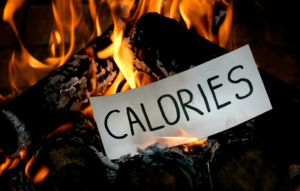
Additionally, the calories burned during a run can often be offset by increased hunger and subsequent overeating. This compensation can lead to a frustrating cycle where the calories you burn during your run are quickly replenished, negating your weight loss efforts.
Adaptation and Plateaus
Another significant issue with relying solely on running for weight loss is the body’s remarkable ability to adapt – humans are very efficient runners. As you continue to run the same distances at the same intensity, your body becomes more efficient at conserving energy. This means you burn fewer calories for the same amount of effort over time, leading to weight loss plateaus.
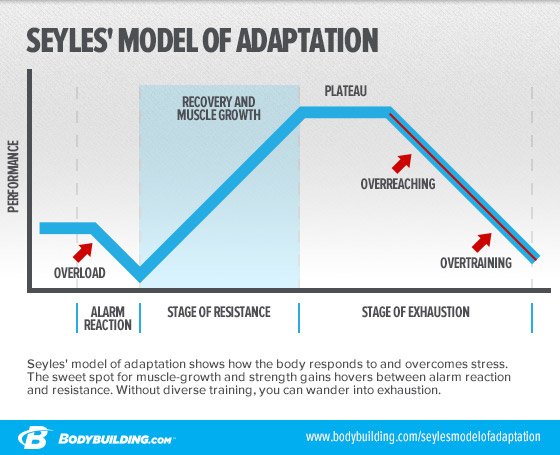
These plateaus can be demotivating and make it difficult to continue seeing progress. Without variety and increased intensity, your running routine can quickly become stagnant, and the initial progress into your weight loss journey can stall out.
Impact on Muscle Mass
Excessive running, especially without incorporating strength training, can also lead to muscle loss. While running does engage your muscles, it doesn’t provide the resistance needed to build and maintain muscle mass effectively. Over time, this can result in a decrease in muscle mass, which is counterproductive to weight loss.
Muscle is metabolically active tissue, meaning it burns more calories at rest compared to fat. Losing muscle mass can lower your basal metabolic rate (BMR), making it harder to lose weight and keep it off. Therefore, preserving and building muscle is crucial for sustained weight loss and overall metabolic health.
The Benefits of Building Muscle
Increased Basal Metabolic Rate (BMR)
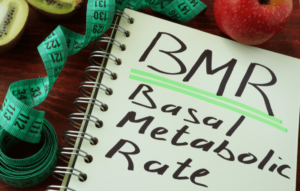
Building muscle has a profound impact on your Basal Metabolic Rate (BMR), which is the number of calories your body needs to maintain basic physiological functions at rest. Muscle tissue is more metabolically active than fat tissue, meaning it burns more calories even when you’re not exercising. By increasing your muscle mass, you boost your BMR, allowing your body to burn more calories throughout the day, even while you’re at rest. This increase in calorie expenditure can significantly enhance your weight loss efforts.
Vascular Tissue and Fat-Burning Capacity
Muscle tissue is also known as vascular tissue due to its rich blood supply. This increased blood flow facilitates better nutrient delivery and waste removal, 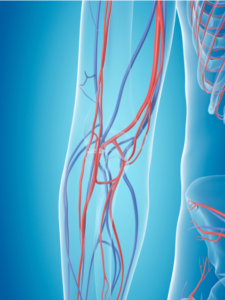 optimizing your body’s ability to burn fat. When you build muscle, you increase your overall capacity to burn fat, not just during exercise but all the time. This enhanced fat-burning capability makes muscle-building a powerful tool for achieving and maintaining a leaner physique.
optimizing your body’s ability to burn fat. When you build muscle, you increase your overall capacity to burn fat, not just during exercise but all the time. This enhanced fat-burning capability makes muscle-building a powerful tool for achieving and maintaining a leaner physique.
Insulin Sensitivity and Metabolic Health
Insulin sensitivity refers to how effectively your cells respond to insulin, a hormone that regulates blood sugar levels. High insulin sensitivity allows your cells to use glucose more effectively, reducing the likelihood of it being stored as fat. Muscle tissue plays a critical role in improving insulin sensitivity because it uses glucose for energy and storage.
By building muscle, you create more insulin-sensitive tissue, which helps regulate blood sugar levels and reduces the risk of developing insulin resistance and type 2 diabetes. Improved insulin sensitivity also means your body can better manage and utilize the nutrients you consume, further supporting your weight loss and overall health goals.
Practical Steps for Building Muscle
Resistance Training Basics
To get the most benefits of muscle building you’ve got to incorporate some resistance training into your fitness routine. Resistance training involves exercises that cause your muscles to contract against an external resistance, such as weights, resistance bands, or your own body weight. Key principles for effective muscle building include progressive overload, where you gradually increase the resistance or intensity of your exercises, and consistency, ensuring you’re encouraging your body to adapt regularly.

Combining Cardio with Strength Training
While building muscle should be a priority, it certainly does not mean you have to give up cardio altogether. Combining cardio with strength training is a part of developing a holistic and balanced approach to fitness.
High-intensity interval training (HIIT) is an excellent way to integrate cardio without compromising muscle gains. HIIT involves short bursts of intense activity followed by brief recovery periods, effectively burning calories and preserving muscle mass.
Nutrition for Muscle Growth
Nutrition plays a crucial role in muscle growth and fat loss. Prioritize protein intake to support muscle repair and growth, aiming for a variety of protein sources such as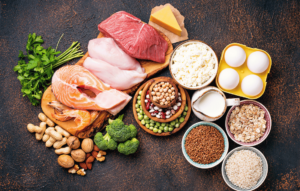 lean meats, fish, eggs, dairy, and plant-based options. Additionally, maintain a balanced diet with healthy fats and complex carbohydrates to provide the energy needed for your workouts and daily activities.
lean meats, fish, eggs, dairy, and plant-based options. Additionally, maintain a balanced diet with healthy fats and complex carbohydrates to provide the energy needed for your workouts and daily activities.
By focusing on building muscle through resistance training, balanced cardio, and proper nutrition, you can transform your body, boost your metabolic rate, and achieve sustainable weight loss.
Overcoming Common Barriers
Time Constraints
One of the most common barriers to incorporating resistance training into your routine is time. However, building muscle doesn’t require spending hours in the gym each day – that’s actually a common misconception people make that contributes to “leaving gains on the table” so to speak. Efficient workout routines, such as high-intensity interval training (HIIT) or circuit training, can provide effective muscle-building workouts in as little as 20-30 minutes a few times a week, but even 30 minutes to an hour of standard lifting 2-3x per week can do you a lot. You can also focus on compound exercises that work multiple muscle groups at once, such as squats, deadlifts, and bench presses, to maximize your results in a shorter amount of time.
Gym Anxiety
Feeling intimidated or anxious about going to the gym is also a common issue, especially for beginners or those who haven’t been in a while. To overcome this you can start with bodyweight exercises at home to build confidence and strength – you can also get a lot done at home with some resistance bands and/or a couple of kettlebells. As you become more comfortable, consider joining a gym with a

supportive environment or hiring a personal trainer to guide you through the basics – ask that fit friend of yours if you can tag along sometime. Remember, everyone starts somewhere, and the key is to focus on your progress and not compare yourself to others.
Staying Motivated
Maintaining motivation can be challenging, especially when results are slow or plateaus occur. Setting realistic, achievable goals and tracking your progress can help keep you focused and motivated. Celebrate small victories along the way, such as increasing the weight you lift or noticing improved muscle definition.
Variety is also crucial for maintaining motivation. Incorporate different exercises, try new workout routines, or join fitness classes to keep things interesting and prevent boredom. Finding a workout buddy or joining a fitness community also goes a long way in providing some additional support and accountability, making it a lot easier to stay on track.
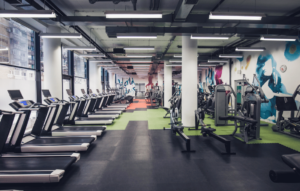
Final Thoughts
Soley relying on running often falls short when it comes to effective weight loss. By focusing on building muscle through resistance training, you can significantly boost your metabolic rate, enhance your fat-burning capacity, and improve your insulin sensitivity. You can still run and develop your cardiovascular health, for sure, but let’s aim to make that as efficient as possible by building vascular tissue to pump all that blood through – it’ll make a significant difference in your health overall.
Incorporate the practical steps listed above, like efficient workout routines, balanced cardio, and proper nutrition to maximize your results. Know and accept that you’ll need to break through the typical barriers of time constraints, gym anxiety, and staying motivated – plan appropriately and take charge on your journey to a leaner, healthier you.
Embrace the power of muscle building and transform your approach to fitness. Say goodbye to a lack of results and unlock the true potential of your body. It’s time to train smarter and harder.








